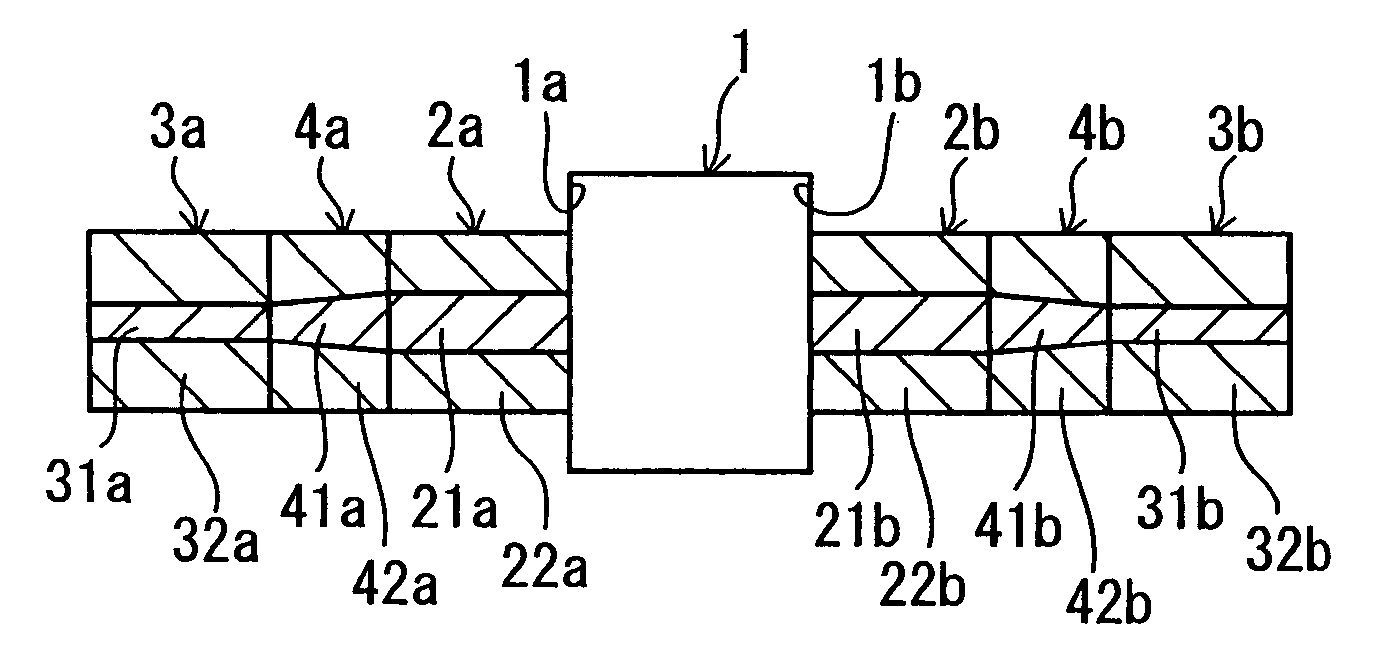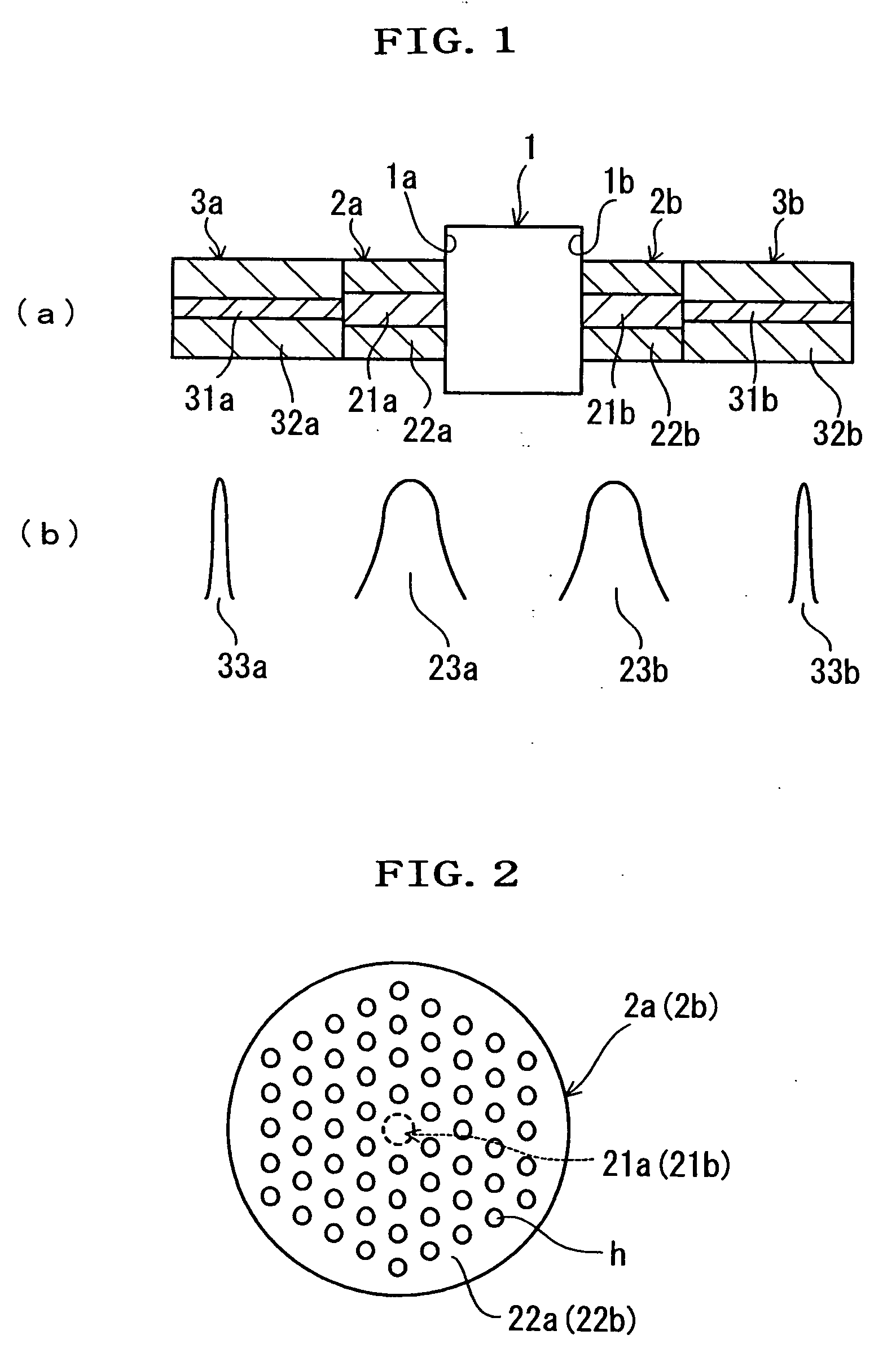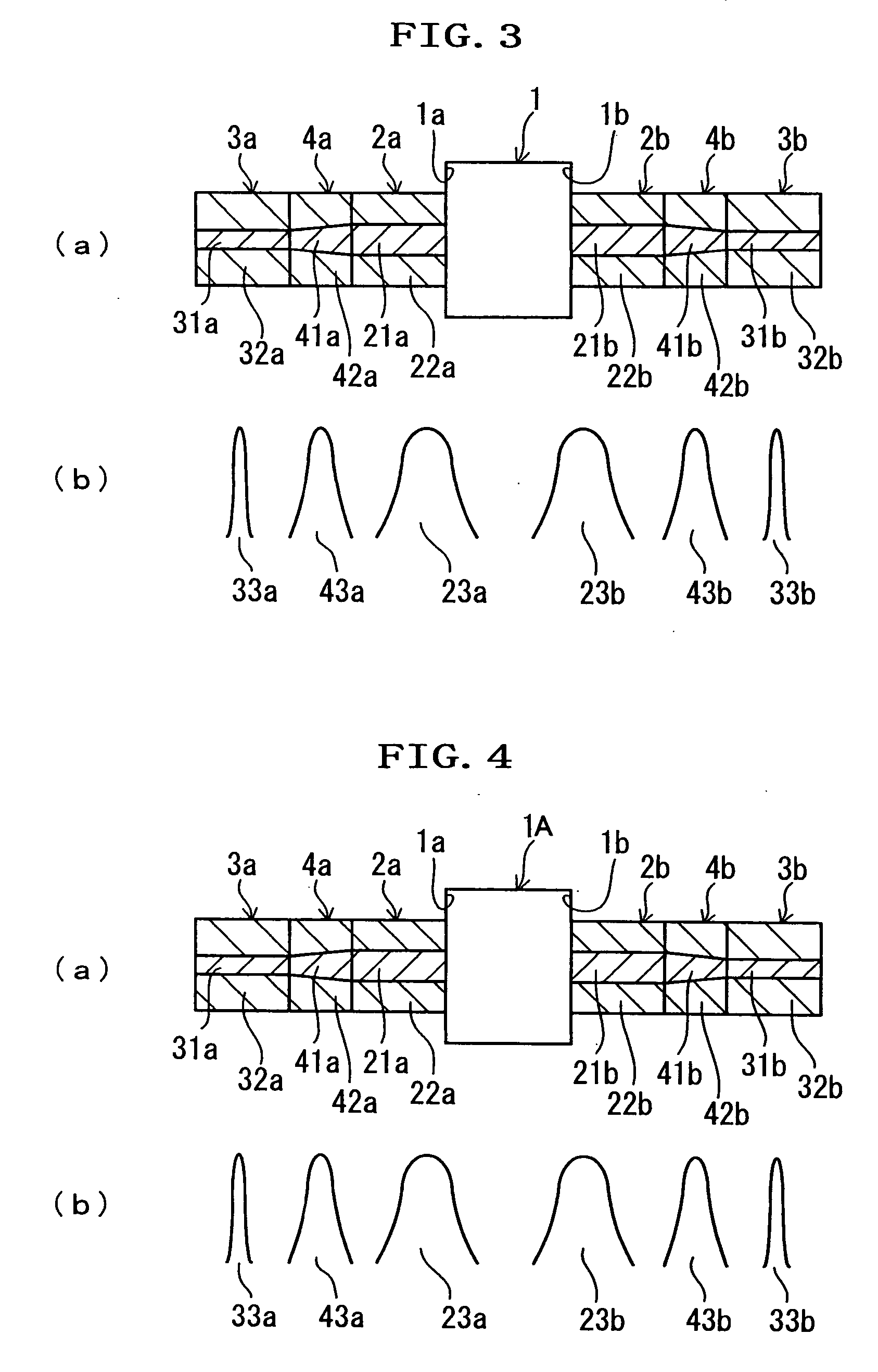Optical fiber component
a technology of optical fiber and component, applied in the direction of optics, optical waveguide light guide, instruments, etc., can solve the problems of increasing the cost as a whole, complicated alignment, and high cost, and achieve the effect of reducing the angle of diffraction of light to propagate, reducing the loss of connection, and easy optical coupling
- Summary
- Abstract
- Description
- Claims
- Application Information
AI Technical Summary
Benefits of technology
Problems solved by technology
Method used
Image
Examples
first embodiment
[0032]FIG. 1 is a longitudinal section of a portion of an optical fiber component according to the invention, and FIG. 2 is a transverse section of a PhC fiber.
[0033] In FIG. 1, the optical fiber component of the invention comprises: an optical element 1 made of an optical isolator, an optical filter, an optical switch or an optical variable attenuator, or their combination; a pair of PhC fibers 2a and 2b with a large MFD (approximately 30 to 50 μm); and a pair of SM fibers 3a and 3b with a small MFD (approximately 10 μm). The optical element 1 is provided with a light incident end face 1a on its one side and a light exit end face 1b on its other side. The pair of the PhC fibers 2a and 2b has cores 21a and 21b for propagated light and clads 22a and 22b disposed on the outer peripheries of the cores 21a and 21b. Likewise, the pair of SM fibers 3a and 3b has cores 31a and 31b and clads 32a and 32b disposed on the outer peripheries of the cores 31a and 31b.
[0034] Here, the PhC fiber 2...
second embodiment
[0039]FIG. 3 presents a longitudinal section of a portion of an optical fiber component according to the invention. From FIG. 3, the portions common to those of FIG. 1 and FIG. 2 are omitted in detailed description by designating them by the common reference numerals.
[0040] In FIG. 3, the optical fiber component according to the second embodiment comprises the optical element 1 having the light incident end face 1a on its one side and the light exit end face 1b on its other side. An end face (or output end) of the first PhC fiber 2a is optically connected to the light incident end face 1a of the optical element 1 while being aligned with the optical axis of the optical element 1. An end face (or input end) of the second PhC fiber 2b is optically connected to the light exit end face 1b while being aligned with the optical axis of the optical element 1. Moreover, an end face (or output end) of a first GI fiber 4a is optically connected to the other end face (or input end) of the first...
third embodiment
[0044]FIG. 4 is an explanatory diagram of an optical fiber component according to the invention. From FIG. 4, the portions common to those of FIG. 3 are omitted in detailed description by designating them by the common reference numerals.
[0045] In the optical fiber component according to the third embodiment, an optical isolator 1A is employed as the optical element.
[0046] Optical measurements on this embodiment have revealed, for a wavelength of 1,550 nm, that the insertion loss between the first and second SM fibers 3a and 3b was 0.5 dB, and that the isolation was 45 dB.
PUM
| Property | Measurement | Unit |
|---|---|---|
| mode field diameter | aaaaa | aaaaa |
| insertion loss | aaaaa | aaaaa |
| insertion loss | aaaaa | aaaaa |
Abstract
Description
Claims
Application Information
 Login to View More
Login to View More - R&D
- Intellectual Property
- Life Sciences
- Materials
- Tech Scout
- Unparalleled Data Quality
- Higher Quality Content
- 60% Fewer Hallucinations
Browse by: Latest US Patents, China's latest patents, Technical Efficacy Thesaurus, Application Domain, Technology Topic, Popular Technical Reports.
© 2025 PatSnap. All rights reserved.Legal|Privacy policy|Modern Slavery Act Transparency Statement|Sitemap|About US| Contact US: help@patsnap.com



